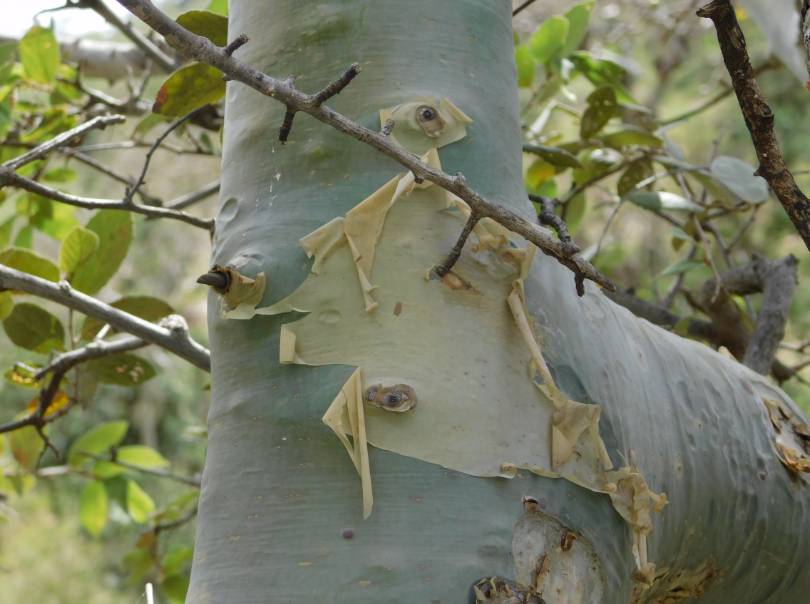|
Family: Burseraceae |
M. Thulin (1999) Commiphora 2: 187-228 Plants trees or shrubs, usually dioecious, rarely monecious; outer bark often peeling away from the green underbark; exudate usually aromatic, often drying to a gum-resin; wood soft, light; branches often spine-tipped. Leaves odd pinnate with 1-3-leaflets or simple. Inflorescences panicles, cymes, clusters or of solitary flowers; staminate inflorescens often larger and looser than pistillate inflorescences. Calyces 4-lobed; petals 4, free; stamens usually 8 in two whorls of 4, sometimes 4; staminodes present in pistillate flowers; ovaries 2(-3)-celled, with 2 pendulous ovules in each cell; styles simple, short; stigmas capitate; pistillodes sometimes present in staminate flowers. Fruits drupes with a single 1(-2)-seeded stone, outer part of pericarp (fruit wall) splitting into 2 or 4 valves; stones usually covered, at least at the base, by a ± fleshy, variously lobed, and often red, orange or yellow pseudaril (an outgrowth of the endocarp), usually with a fertile 1-seeded cell and a sterile cell, but sometimes both cells fertile. Commiphora is a genus of some 150 species that is widespread in the drier parts of the tropical Africa and Madagscar, extending to India via the Arabian peninsula and Iran. It is also present in Mexico and Brazil. Many species of Commiphora are leafless for most of the year and usually set flower and fruit when leafless or with young leaves. Therefore, the collecting of complete material is difficult, and many species have been described from incomplete or mixed collections. Adding to the difficulty, in the dioecious species the staminate plants never produce fruits. Key to species of Commiphora in Somaliland and Somalia ©Trustees of the Royal Botanic Gardens, Kew; reproduced with permission. Global distribution of Commiphora based on specimens records provided to GBIF. Note: GBIF records include introduced and cultivated plants. Consequently, the distribution shown often differs from statements about a taxon's native distribution.
|


